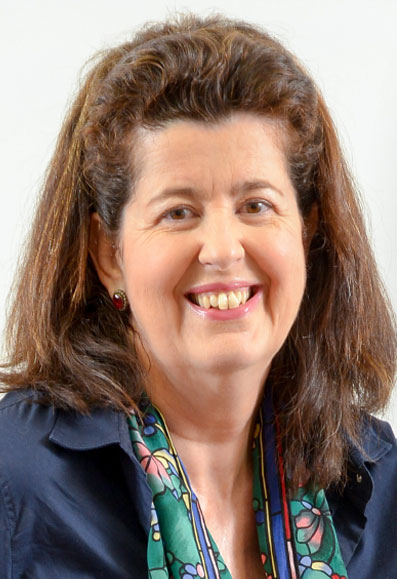
Affiliations
Associate Professor, Department of Biochemistry, Yong Loo Lin School of Medicine, NUS.
Assistant Dean (Student Affairs), Yong Loo Lin School of Medicine, NUS.
Supervisor, NUS Graduate School for Integrative Sciences and Engineering (NGS), NUS.
Biodata
Dr. Marie-Veronique Clement obtained her basic degree in Cellular Biology (B.Sc) with major in Immunology from Paris-6 University, Paris, France in 1986. She pursued her interest in Immunology during her M.Sc (1987) and PhD (1991) at the Pasteur Institute and Paris-6 University, Paris, France. Following her doctoral studies, she proceeded to the United States (1992-1996) as a post-doctoral fellow in the Department of Pathology at Harvard Medical School/Massachusetts General Hospital, Boston, MA. It was during her post-doctoral training that she made the significant observation that, contrary to the common belief; an increase in intracellular level of superoxide could inhibit death receptor-induced apoptotic signaling (Clement and Stamenkovic, 1996). She joined the National University Medical Institute, National University of Singapore in 1997 as a Research Associate, was appointed as an Assistant Professor in the Department of Biochemistry, NUS in 2001 and is currently a tenured Associate Professor in the Dept. of Biochemistry as well as the Deputy Head of the Department of Biochemistry and an Assistant Dean Education (Student affairs) at the Yong Loo Lin School of Medicine. As an independent PI, Dr Clement’s group dispelled the dogmatic view of reactive oxygen species as only toxic molecules by providing evidence for their involvement in cell survival signaling pertinent to carcinogenesis. For this work she was the Recipient of the NUS Outstanding Research Award (team award) 2005. More recently, Dr Clement’s group has made significant progress in the understanding of the pathway involved in he induction of cell survival by superoxide. In particular her group is the first involving the regulation of the Na+/H+ exchanger 1 expression in the redox control of cell survival and cell death. Finally, her most recent contribution is the demonstration that an increase in intracellular level of superoxide contributes to the regulation of the oncogenic kinase Akt through an S-nitrosylation mediated inhibition of the tumor suppressor PTEN and inhibition of the dephosphorylation of cytosolic Akt by PP2A.
Research Interest
* Reactive oxygen species and regulation of cell survival and cell death.
The first interest of our research group is to understand the role of intracellular reactive oxygen species such as superoxide (O2.–) and hydrogen peroxide (H2O2) in the regulation of apoptosis and the regulation of cell response to death triggers.
* Superoxide dependent survival pathways in tumor cells.
Our second interest is to assess if intracellular production of O2.– could be a common denominator to oncogene associated survival pathways in tumor cell. A better understanding of these O2.–.-producing pathway(s) may be of critical importance to improve our understanding of cancer development, and most importantly may help to design new approaches to cancer therapy.
Selected Publications
- Clement, M. V. and I. Stamenkovic (1996). “Superoxide anion is a natural inhibitor of FAS-mediated cell death.” EMBO J 15(2): 216-225.
- Lim, S. and M. V. Clement (2007). “Phosphorylation of the survival kinase Akt by superoxide is dependent on an ascorbate-reversible oxidation of PTEN.” Free Radic Biol Med 42(8): 1178-1192.
- Loo, S. Y., M. K. Chang, C. S. Chua, A. P. Kumar, S. Pervaiz and M. V. Clement (2012). “NHE-1: a promising target for novel anti-cancer therapeutics.” Curr Pharm Des 18(10): 1372-1382.
- Luo, L., J. Kaur Kumar and M. V. Clement (2012). “Redox control of cytosolic Akt phosphorylation in PTEN null cells.” Free Radic Biol Med 53(9): 1697-1707.
- Gyori, B. M., G. Venkatachalam, P. S. Thiagarajan, D. Hsu and M. V. Clement (2014). “OpenComet: an automated tool for comet assay image analysis.” Redox Biol 2: 457-465.
- Hlaing, K. H. and M. V. Clement (2014). “Formation of protein S-nitrosylation by reactive oxygen species.” Free Radic Res 48(9): 996-1010.
- Kumar, A. P., S. Y. Loo, S. W. Shin, T. Z. Tan, C. B. Eng, R. Singh, T. C. Putti, C. W. Ong, M. Salto-Tellez, B. C. Goh, J. I. Park, J. P. Thiery, S. Pervaiz and M. V. Clement (2014). “Manganese superoxide dismutase is a promising target for enhancing chemosensitivity of basal-like breast carcinoma.” Antioxid Redox Signal 20(15): 2326-2346.
- Nim, T. H., L. Luo, J. K. White, M. V. Clement and L. Tucker-Kellogg (2015). “Non-canonical Activation of Akt in Serum-Stimulated Fibroblasts, Revealed by Comparative Modeling of Pathway Dynamics.” PLoS Comput Biol 11(11): e1004505.
- Loo, S. Y., J. L. Hirpara, V. Pandey, T. Z. Tan, C. T. Yap, P. E. Lobie, J. P. Thiery, B. C. Goh, S. Pervaiz, M. V. Clement and A. P. Kumar (2016). “Manganese Superoxide Dismutase Expression Regulates the Switch Between an Epithelial and a Mesenchymal-Like Phenotype in Breast Carcinoma.” Antioxid Redox Signal 25(6): 283-299.
- Leow, S. M., S. X. Chua, G. Venkatachalam, L. Shen, L. Luo and M. V. Clement (2016). “Sub-lethal oxidative stress induces lysosome biogenesis via a lysosomal membrane permeabilization-cathepsin-caspase 3-transcription factor EB-dependent pathway.” Oncotarget.
- Venkatachalam, G., U. Surana and M. V. Clement (2017). “Replication stress-induced endogenous DNA damage drives cellular senescence induced by a sub-lethal oxidative stress.” Nucleic Acids Res 45(18): 10564-10582.

